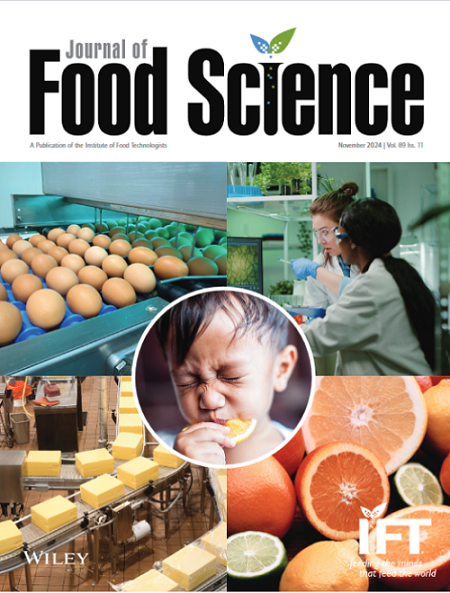Characterization of nutritional and volatile flavor compounds of Pleurotus eryngii under different cultivation methods
Abstract
Pleurotus eryngii (DC.) Quél.is a nutritious mushroom. Efforts have been made by modifying cultivation conditions to increase the yield of P. eryngii. However, the effects of these changes on its flavor and nutritional characteristics are not well understood. This study measured the nutritional content and free amino acid (FAA) levels of P. eryngii cultivated using two methods: soil-covered cultivation (in which the mushroom spawn logs are covered with soil outdoors) and factory cultivation (in which the mushroom spawn logs are grown in indoor greenhouses). Volatile compounds (VCs) were also identified and quantified using solid-phase microextraction–gas chromatography–mass spectrometry, whereas partial least squares discriminant analysis and activity values were applied to evaluate aroma differences between the two cultivation methods and to identify key characteristic compounds. The results showed that the total nutritional content and FAA levels of P. eryngii grown using soil-covered cultivation were 10.03% and 42.57% higher, respectively, than P. eryngii grown under factory cultivation. A total of 334 VCs were identified, including 54 different aroma compounds. The odor activity value results indicated that 15 VCs could serve as key aroma compounds, with 1-octen-3-one, methanethiol, 3-methylthiopropanol, isovaleraldehyde, and 3-octanone contributing most to the aroma of P. eryngii. In conclusion, soil-covered cultivation can significantly enhance the quality of P. eryngii. These research findings can guide the production of high-quality P. eryngii.
Practical Application
P. eryngii, known for its low fat and low calorie content, is an ideal fit for today's health-conscious diets. This study can help growers choose cultivation methods that best suit local environmental conditions and market demands. For example, if land is available and the emphasis is on flavor quality, soil-covered cultivation may be preferred. Conversely, if consistent, high, and stable yields are required throughout the year, factory cultivation is a suitable option. Furthermore, this research provides technical support and a theoretical foundation for the deep processing and industrialization of P. eryngii, promoting its sustainable development within the food industry.

 求助内容:
求助内容: 应助结果提醒方式:
应助结果提醒方式:


